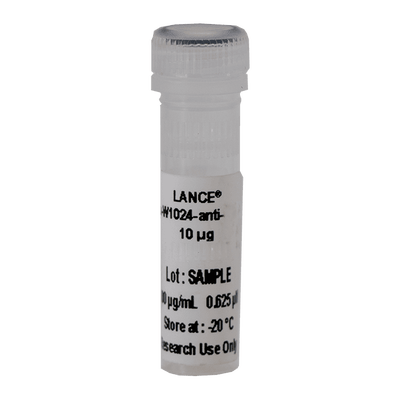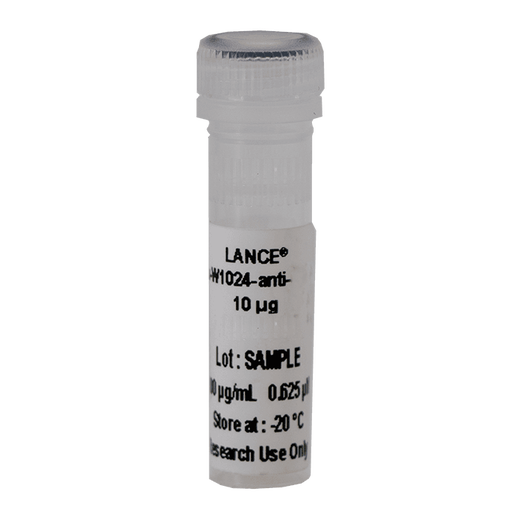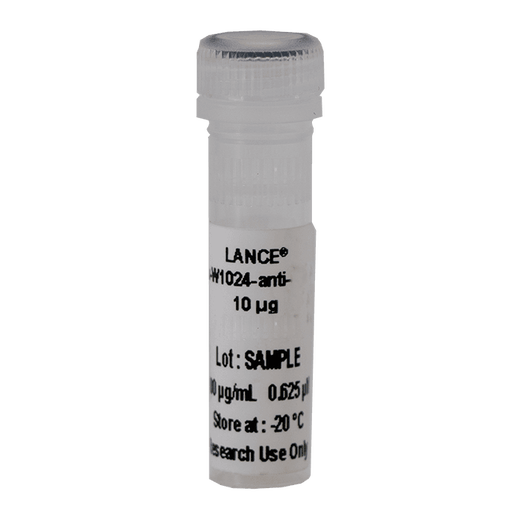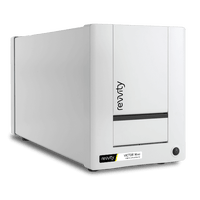
LANCE Protein G Fluorophore tag, 10µg

LANCE Protein G Fluorophore tag, 10µg




Europium-labeled Protein G, for capturing antibodies in LANCE® TR-FRET assays.
For research use only. Not for use in diagnostic procedures. All products to be used in accordance with applicable laws and regulations including without limitation, consumption and disposal requirements under European REACH regulations (EC 1907/2006).
| Feature | Specification |
|---|---|
| Application | Protein Quantification |
Europium-labeled Protein G, for capturing antibodies in LANCE® TR-FRET assays.
For research use only. Not for use in diagnostic procedures. All products to be used in accordance with applicable laws and regulations including without limitation, consumption and disposal requirements under European REACH regulations (EC 1907/2006).


LANCE Protein G Fluorophore tag, 10µg


LANCE Protein G Fluorophore tag, 10µg


Product information
Overview
Eu-W1024 labeled Protein G is for LANCE® assays where the analyte concentration is < 1-10 nmol/L and assay pH > 7. Protein G is a recombinant form cloned from Streptococcus spp. and produced in E. coli. Protein G binds to the Fc region of IgG by a non-immune mechanism which is similar to that of Protein A, but the binding range is broader and the binding affinity greater for Protein G. Protein G binds to all subclasses of human IgG and mouse IgG. In addition it binds to rat, goat, sheep, guinea pig, rabbit, cow, pig and horse antibodies. It does not bind to chicken or cat antibodies, and binds weakly to IgG from dog. Protein G does not bind to human IgA, IgM or serum albumin. Protein G is supplied ready for use in 50 mmol/L Tris HCl buffered saline solution. As a general guideline for DELFIA® immunoassays, a final concentration of 100 ng/mL Protein G may be suitable for generation of the assay signal.
Eu-labeled protein G has also been used successfully in a LANCE™ receptor binding assay. In this assay, an Fc-fusion protein was bound to a biotinylated ligand, with APC-labelled streptavidin at the same concentration as the ligand as the acceptor. The Eu-labelled protein concentration was twice that of the receptor. In this assay, a signal-to-noise ratio of 8.5 was observed, which was similar to that seen when using Eu-labelled protein A in the same assay.
Generic LANCE® reagents are intended for setting up homogeneous time-resolved fluorescence resonance energy transfer (TR-FRET) based assays using Eu-Chelate label as a donor and APC-labeled reagent as an acceptor. Generic reagents facilitate setting up LANCE® assays when there is a limited amount of specific reagents available or the assay reagents are relatively unstable. To enable optimization of both the signal or the noise ratio and signal stability, some of the generic reagents are labeled with two different chelates, W1024 or W8044.
LANCE® (Lanthanide chelate excite) and LANCE® Ultra are our TR-FRET (time-resolved fluorescence resonance energy transfer), homogeneous (no wash) technologies. One molecule of interest is labeled with a donor fluorophore (a LANCE Europium chelate) and the second molecule is labeled with an acceptor fluorophore [ULight™ dye, allophycocyanin (APC), etc.]. Upon excitation at 320 or 340 nm, energy can be transferred from the donor Europium chelate to the acceptor fluorophore if sufficiently close for FRET (~10 nm). This results in the emission of light at 665 nm (for ULight dye and APC).
Specifications
| Application |
Protein Quantification
|
|---|---|
| Automation Compatible |
Yes
|
| Brand |
LANCE Ultra
|
| Conjugates |
Protein G
|
| Detection Modality |
LANCE
|
| Fluorophore |
Eu-W1024
|
| Product Group |
Fluorescent Reagent
|
| Shipping Conditions |
Shipped in Dry Ice
|
| Target Class |
Biomarkers
|
| Technology |
TR-FRET
|
| Unit Size |
10 µg
|
Resources
Are you looking for resources, click on the resource type to explore further.
Here, we demonstrate the utility and benefits of using LANCE Ultra TR-FRET assay technology for identifying and characterizing PD...
LANCE™ Ultra TR-FRET is a no-wash proximity assay technology that combines the benefits of time resolution (TR) with fluorescence...
SDS, COAs, Manuals and more
Are you looking for technical documents related to the product? We have categorized them in dedicated sections below. Explore now.
-
LanguageEnglishCountryUnited StatesName
-
LanguageEnglishCountryEUName


How can we help you?
We are here to answer your questions.

































